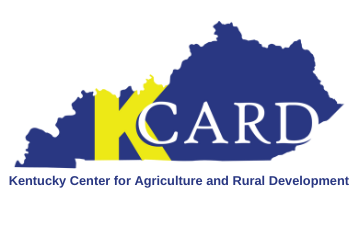When working with clients, KCARD often starts by looking at a current income statement (also called a Profit/Loss statement) that is in operation and helps develop a projected income statement for a new or expanded operation. These help show if the business is profitable now or will be profitable in the future.
However, the cash flow statement is critical to understanding whether the business will be able to survive the initial startup stage or any downturns. This statement shows inflows and outflows of cash to or from the business.
So what’s the difference between the two and how they are used?
Income Statement
The Income Statement, also known as a Profit and Loss Statement lists a company’s revenues and expenses during a particular period. There are two main parts to an income statement:
Income
Sales
Other Income
Expenses
Cost of Goods Sold
Operating Expenses
Other Expenses
Income consists of all sales of a product or services. It is best to break out each income stream to track the enterprises associated with it. For example, if you sell at a farmers market, you might break down the income into the different farmers markets or separate it from a CSA that you have. Other operating income is also captured and includes USDA payments.
Expenses are broken down into three major categories: Cost of Goods Sold (COGS), Operating Expenses, and Other Expenses. COGS are expenses associated directly with the cost of the product or service sold. To learn more about COGS, check out our blog post here. Operating expenses are the overhead costs of the business. This may include advertising, insurance, licenses and permits, management labor and payroll expense, to name a few. Other expenses include depreciation of business-related equipment and interest accrued on loan payments.
Gross Margin = Income - COGS
Net Income before Taxes = (Gross Margin + Other Income) - (Operating Expenses + Other Expenses)
Cash Flow Statement
A cash flow statement lists all money in and all money out. This statement provides a measure of how well the company can generate cash to pay off its debt obligations and cover its operating expenses.
A beginning cash balance should be the starting point for any cash flow. This should be the money the business has on hand at the start of the period recorded.
The main components of a Cash Flow Statement are:
Source of Funds
Use of Funds
The source of funds will be how cash is generated for the business. Net Income before Taxes will be derived directly from the income statement. Other sources of funds may include grants, loans, lines or credit, or owner investment. All of which should be listed separately.
The use of funds will be purchase of large items in a given period of time. This may be equipment, building(s), or land. Payment of all debts owed by the business should also be captured here. This will include principal and interest payments for loan payments and lines of credit.
Funds Generated = Total Source of Funds – Total Use of Funds
The ending cash balance will be the beginning cash balance plus funds generated.
The Difference?
Profit/loss statements can show whether the business is profitable, but do not show loan principal payments. Since those payments can be quite large, it is critical to have a cash flow statement that can show you for each period whether you have sufficient funds to make it to the next period since the cash flow statement will encompass all of the funds going in and leaving the business.
For new businesses, especially seasonal ones, we strongly encourage you to develop a monthly cash flow for the new business.
Knowing the financial health of your business is crucial. KCARD can help you put together financials for your business and work through income statements and cash flows. For help, contact KCARD at 859-550-3972 or email us at kcard@kcard.info.

